
What's not to like? The Wizard of Oz (F7b) is a huge link up of the finest deep water solo traverses at Berry Head in Devon. An early morning crossing is a magical experience with the sun illuminating your private arena. Beneath your feet small fish play and the dark green sea playfully slaps the rock. Above you peregrines dive bomb unwary pigeons. Stretching before you are 700 metres of white limestone, stained red and pink by oxides of iron. This beauty is immortalised on the front cover of the Rockfax Deep Water guide. Idyllic yes, but you cannot afford to relax too much. The dark depths of five sea caves are yet to be negotiated and you have to send four crux sections of F7a /7a+. Failure means game over and a soggy retreat.
Like its namesake movie, The Wizard of Oz is a technicolor journey of an epic nature. Its history involves a cast list, which reads like a Who's Who of British sea cliff climbing. Forty-two years in the making, this climb is a link up of ten existing climbs. Magical Mystery Tour I (F6a+) is reversed into Rainbow Bridge (F7a+) and Look before you Leap (F6b) is down-climbed into The Cauldron (F7a+) sea cave. Deliverance to the second half of Rainbow Bridge is via a rope bridge where the wild jug rail of The Wave Variation (F6c) awaits you. To keep things safe the route drops down to join the later stages of Gluteus Maximus (F7a) and deposits the climber on Terminal Zawn ledges. After a good rest and a stroll, it is on with Oz Wall Traverse (F6b+). At its end you drop down intoCavewoman (F6c) with its pumpy traverse and claustrophobic exit up a calcite chimney. A little of Barnacle Traverse Continuation (F6b) and then the exhausted climber is faced with the monstrously overhanging White Rhino Tea (F7a) as a grand finale
Local activist Ken Palmer had toyed with the concept for some time with compromised solos of Return to Oz and Britain's Best DWS Traverse. However, The Wizard of Oz is a better, safer and more logical line and Ken soloed it in one push on August 18th 2010. An overall grade of F7b was proposed.
The plot
Opening scene
It is New Year's Eve 1967 and Peter Biven is keen to show off his classic climbMoonraker to his friends. He set off upwards with Al Alverez belaying and Rusty Baillie and John Cleare were to follow as the second rope. John recalls, " the first pitch is overhanging and quite intimidating and we were freezing cold hanging around, so I shouted up to Pete asking what was round the corner. He didn't know - no one had looked. So while waiting for Al to start climbing, we pushed round the corner to look. And with our Swanage traverse (Traverse of the Gods) still in mind, we continued - and continued - and continued. You might say it was chickening-out of hanging around getting cold and damp and seeing Alvarez fighting up those extremely strenuous-looking overhangs. And too much Christmas Pudding and booze the previous evening at Pete's place. It was the easy option!
Naturally we wore the rope. We usually roped for such routes, especially in winter, knowing only too well colleagues who'd been lucky to survive big waves - the winter sea is no place in which to go swimming off to France loaded with gear. Of course we got wet, the foot holds below the Overhanging Buttress are underwater, and we did use a couple of pegs on the Overhanging Bastion - this was to descend the overhang as we didn't know and couldn't see what was either below or round the corner. Of course the upper line does continue, if very thin. "
Scene 2
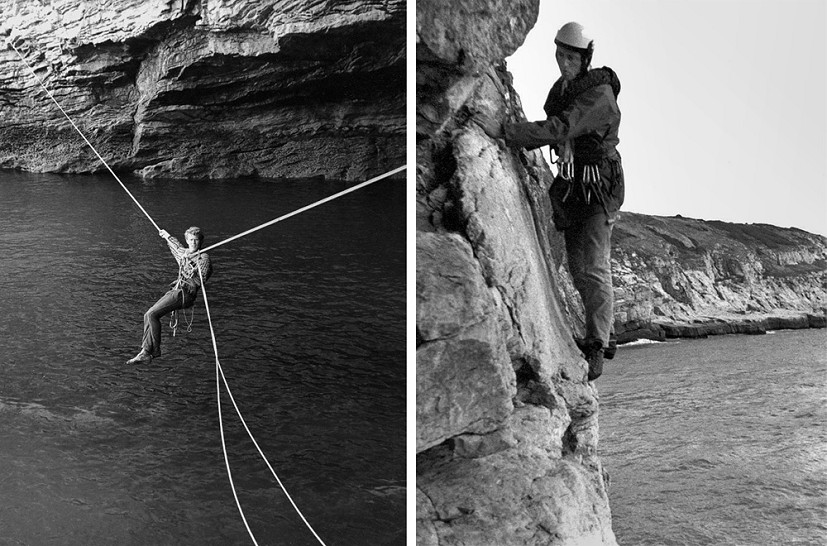
Three days later Frank Cannings and Peter Biven do the first free ascent of Magical Mystery Tour from the Great Cave finishing with a swim across the Blue Grotto. This joyous jug-fest was to become an instant classic.
In his article aboutDreadnought, Frank describes the equipment of the day – "We didn't have harnesses then but tied on with hemp waistlines and we simply stood in slings to take the weight off our waists. Our gear was primitive; laid nylon ropes, basic aluminium wedge runners and of course pegs".
Pat Littlejohn remembers, "the early traverses in Torbay were first done with ropes and a bit of gear (often on bad weather days in winter) but in summer they were frequently soloed. I got into what was later called 'deep water soloing' in the early '70s, doing all the Torquay traverses (Five Star to Kraken) as well as a DWS of Moonraker with Steve Jones."
Whilst it was a far cry from today's approach to deep water soloing it was not the grim-faced epic I had imagined. Frank Cannings corrects me "You never met Peter Biven or Mark Springett, both now dead, but I could not have spent part of a life with more light-hearted people than them. The anthem adopted by us Devon sea cliff climbers was Bob Dylan's "Mr Tambourine Man" which includes these lyrics denoting the free spirit of that day:
"Far from the twisted reach of crazy sorrow
Yes, to dance beneath the diamond sky with one hand waving free
Silhouetted by the sea, circled by the circus sands. With all memory and fate driven deep beneath the waves
Let me forget about today until tomorrow ..."
The final obstacle of the climb was the Blue Grotto, a flooded sea cave that punctures the headland. Wind and tides can both race through here and can suddenly turn the mood more serious. Frank recalls the Blue Grotto was crossed by a swim and the gear pulled across by rope. In South West Climbs Pat Littlejohn recommended a tyrolean for the second man and there is an iconic picture of Biven crawling commando style taken by John Cleare. The modern soloist can solo through the Blue Grotto but the Green Grotto might need a short swim. It is quite feasible to strip off and swim one handed with chalk, boots and clothing held aloft. It goes without saying that this is much more fun with mixed parties.
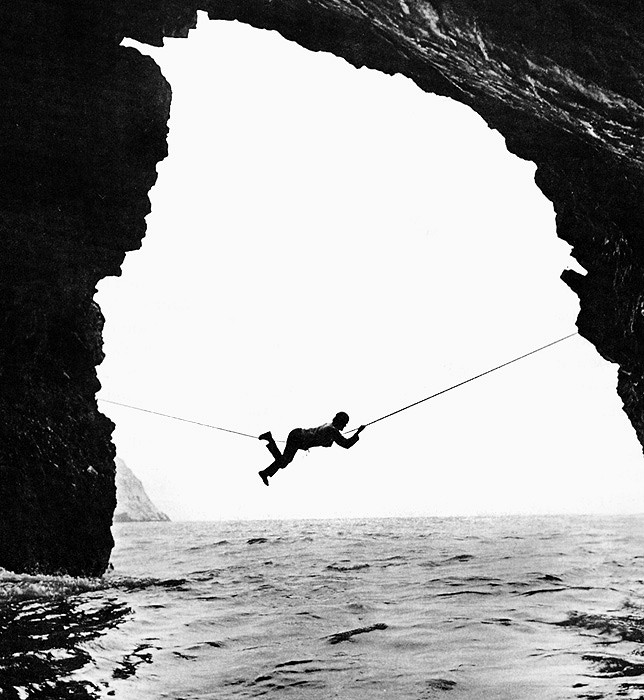
The highly appropriate name Magical Mystery Tour came from the Beatles TV film which had just seen it's first screening five days beforehand. The climb got considerably better reviews! The album however was undeniably a classic.
Scene 3
5th April 1968 Cannings and Biven explore what is to become the Oz Wall section with their huge R to L trad route Barnacle Traverse Continuation (VS/HVS). The exact line seems to be lost in the annals of time and only a little of it is used by the modern DWS. Frank Cannings recalls most of the traverse took place below the high water mark with the occasional submarine foothold.
Scene 4
Also in 1968 Biven and Mark Springett breached the first 250ft of what would become Rainbow Bridge with a largely-aided extravaganza they calledBathos.
Scene 5
October 1973 enter Andy McFarlane and Deryk Ball who get the credit for Rainbow Bridge and its Jimi Hendrix inspired name. They climbed the meat of the route albeit with 8 points of aid.
Scene 6
Spring 1974 saw Pat Littlejohn and Keith Darbyshire extending and improving Rainbow Bridge and cutting the aid to one point. Rainbow Bridge was now firmly established as a top trad adventure at E3 5c. My earliest experience of the climb was seconding Dave Turnbull (Mr BMC) in 1988. The climb was decidedly not in condition. After six wet and scary pitches I mutinied and insisted on upwards escape. The continual prospect of diagonal whippers had eroded my resolve. I remember thinking it would be safer to untie and solo. I was way before my time!
Scene 7
Summer 1982 Pat Littlejohn did all four sections of the one mile long Magical Mystery Tour in one push. Pat recalls "I recorded my time for this (2hours 20mins) and was rightly criticised for introducing speed climbing to Devon! Shortly after this when feeling fit from the Alps I set off to do all the Torbay traverses in one day. This was blown when I lobbed off the crux of Rainbow Bridge (which hadn't then been free climbed) resulting in a long cold swim and a retreat to a cafe"
Pat had free climbed through the Blue Grotto for the first time to provide an atmospheric start for The Wizard of Oz. Crossing the chasm in its depths involves a big backwards bridging manoeuvre which will be tricky if you are short or inflexible.
Scene 8
In 1989 Crispin Waddy frees the crux pitch of Rainbow Bridge. It is winter and he climbs solo to give an entirely free E4 6b.
Scene 9
Nick White solos the entire line of Rainbow Bridge in September 1991 and also the DWS Look Before You Leap (F6b) which is to become an important link in The Wizard of Oz. It takes a while for the DWS craze to catch up but Rainbow Bridge gains legendary status.
Scene 10
In 1992 Ken Palmer enters the hidden cave at the north end of what is to become Oz Wall. It is full of surprises. The in-cut jugs keep on coming and lead all the way to a natural rock bridge and a magical exit via a tight chimney of "purest green" calcite. The result isCavewoman (F6c) - a sadistic creature who delights in torturing those who flout the dress code by climbing shirtless
Scene 11
In 1997 before moving permanently to Oz, Nick Hancock solos Oz Wall Traverse. It takes a safe and technical line above the original Barnacle Traverse Continuation. Today it is generally climbed L-R as a beautiful and sustained F6b+ which is one of my all time favourites.
Scene 12
In 1997 Dave Henderson makes his first contribution with The Wave Variation (F6c)
Scene 13
August 1st 1998 Dave Henderson solos the classic ridiculously-overhanging White Rhino Tea (F7a) – a fitting finale and final test of wilting arms at the end of Wizard of Oz.
Scene 14
Ken Palmer accompanied by youngsters Ben Bransby and Pete Robins climb Whizz of a Wiz (F6c) in 1999. They reverse Hancock's route and add a variation finish toCavewoman by traversing both its walls.
Scene 15
Ken seems to have raided the props department. It is the summer of 2009 and he is seen manhandling a rope fat enough to anchor a ship towards The Cauldron. This sea cave, with its impossible exit had long been described as a project. Now a little monkeying across the fixed rope ends a satisfying F7a+.
Roll the end credits
It is 18th August 2010 and Ken Palmer's latest solo has an air of finality – the ultimate traverse is now finished and deserves its own name. The Wizard of Oz (F7b) is born. An in-situ rope-bridge now ties together the two halves of Rainbow Bridge making it better and safer. Soloists are no longer advised to climb out and walk between the two halves or risk ground falls in the vicinity of Terminal Zawn. What's more, no individual move is harder than the infamous F7a+ slopey crux of Rainbow Bridge.
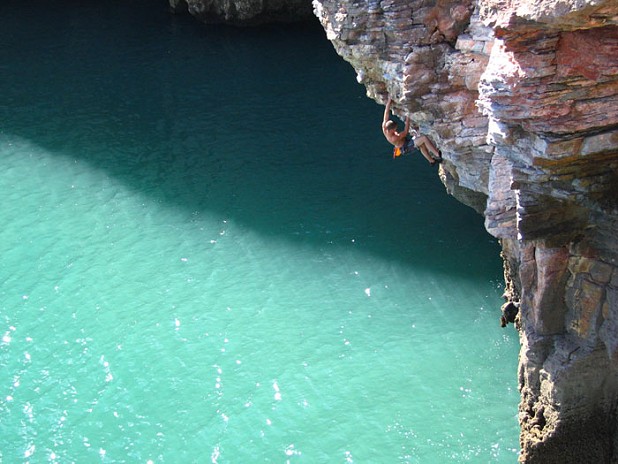
Cast List (alphabetical order)
Rusty Baillie
Deryk Ball
Peter Biven
Ben Bransby
Frank Cannings
John Cleare
Keith Darbyshire
Nick Hancock
Dave Henderson
Pat Littlejohn
Andy McFarlane
Ken Palmer
Mike Robertson
Pete Robins
Mark Springett
Crispin Waddy
Nick White
Reviews
Rockfax about Magical Mystery Tour "a life changing event"
John McShea about Rainbow Bridge (six weeks after on sighting Darkinbad the Brightdayler) "Only probably the best route I have ever done!!! I must have sounded like an audible Paul Williams guide as I was spurting the superlatives. The down climb/cauldron/rope bridge bit was brilliant, I can imagine that it is a much better way of enjoying the route than either the original or the walk. We also had an in situ jelly fish under each crux..."
Me on Oz Wall Traverse "Superlatives fail me. My 2000th route and definitely in my top ten"
Ken Palmer about The Wizard of Oz "The best climb in Britain – that will give them something to argue about at UKC"
Crispin Waddy (at a party) on freeing Rainbow Bridge "Uh – I don't really remember"
Peter Biven describes the unique factors of sea cliff traversing; "(it) has distinctly different character and requires skills such as swimming, lassoing, a knowledge of tide and wave patterns and the ability to deal with angry fulmars and cormorants attacking from above, and sharks, jellyfish and congers from below".
Frank Cannings in response to the rope bridge "Is this akin to placing bolts on Cornish rock?? Does this mean the route still awaits a first free ascent?"
Pat Littlejohn "The Torbay traverses are brilliant and pretty much unique. Wizard of Oz sounds fantastic at the grade, I'd love to be fit enough to give it a bash!"
Nick White on Rainbow Bridge "There aren't enough superlatives in the English language to do this route justice, and it isn't even polished"
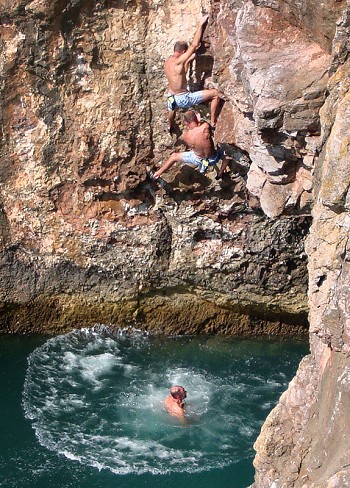
Soundtrack
The Beatles – Magical Mystery Tour
Jimi Hendrix – Rainbow Bridge
Bob Dylan – Tambourine Man
On location
Berry Head at Torbay is unique for the South Coast in that the climbing faces north and east. This gives it shelter from big swells, though easterly winds are best avoided. Before July 31st most of the climbing is bird banned. If the cold water doesn't deter you before this time then the hefty fine of £1000 might. The perfect time to climb it is on a sunny morning in August or September a couple of hours after high tide. This allows a safe low line at Terminal Zawn to be utilised. You may even have low enough water for the Green Grotto to be waded. If not, a swim of a few metres with chalk and boots held aloft will be required. Finally, whilst this challenge should be on the wish list of every talented climber it also has much to offer regular punters like myself. Even if you don't onsight F7a+ there are long sections of F6a+ and F6b+ to enjoy. I like to think of completing the whole thing as my lifetime project.
Screenplay by Kafoozalem
Kafoozalem is a reborn SW enthusiast enjoying climbing a second time around after a long layoff.

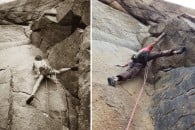

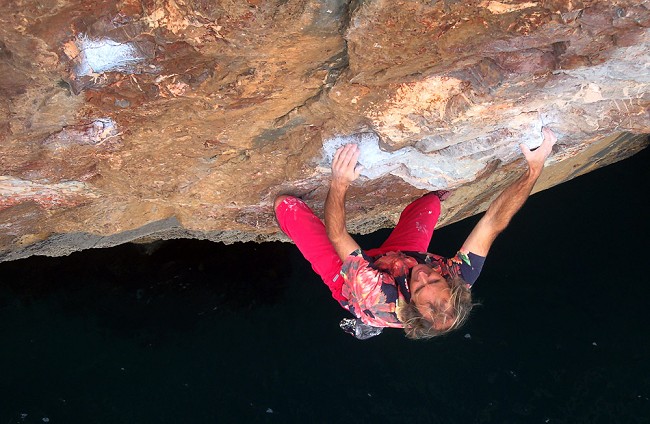
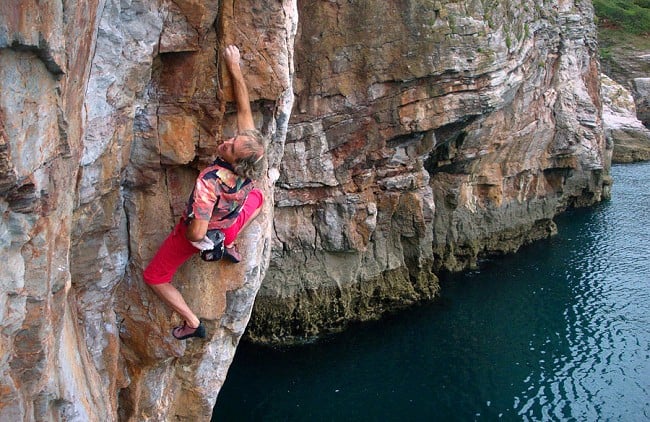


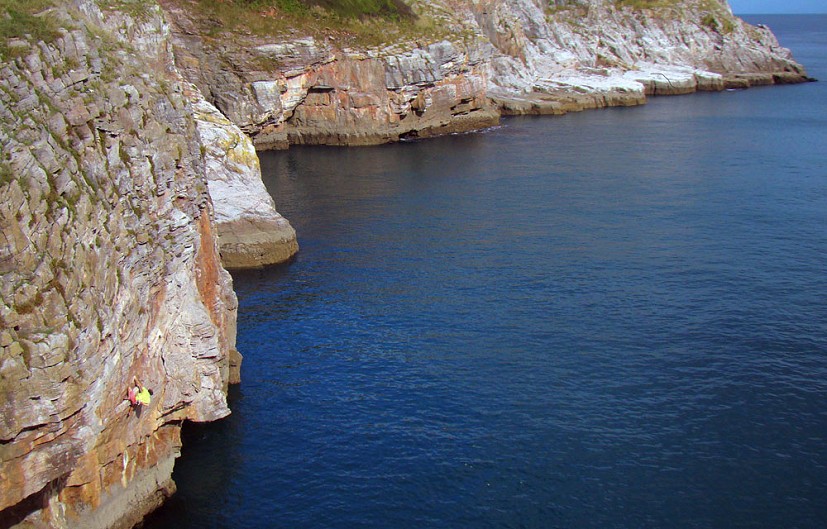
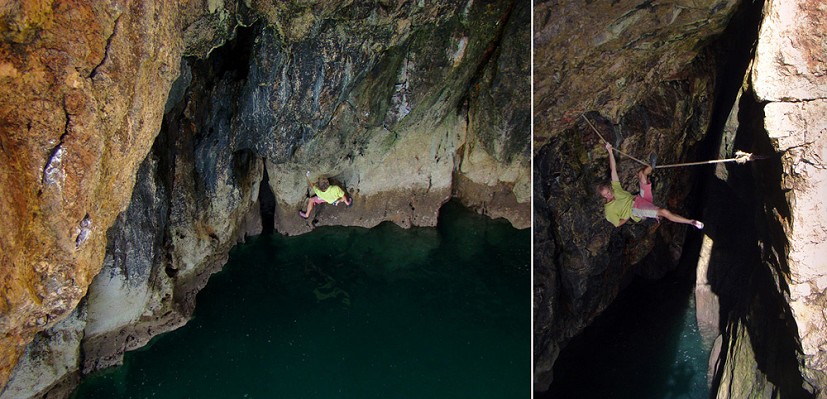
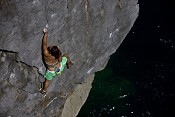

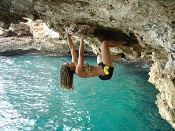

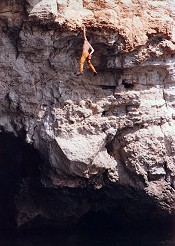








Comments